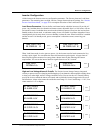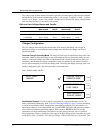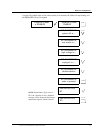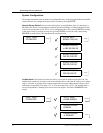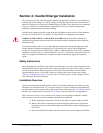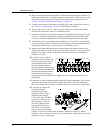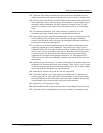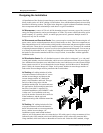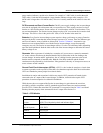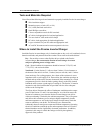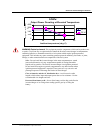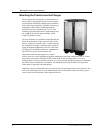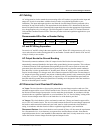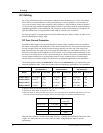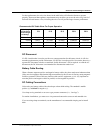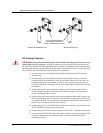
Prosine Installation & Operation Guide 41
Section 4: Inverter/Charger Installation
gauge number indicates a smaller wire diameter (for example: a 2 AWG cable is smaller than a 00
AWG cable). Under the MCM standard, a larger number indicates a larger cable (example: a 350
MCM cable is larger than a 250 MCM cable). Wire size is usually marked on the cables for sizes this
large.
DC Disconnect and Over-Current Device The DC power supply leading to the inverter/charger
must also be equipped with a disconnect and over-current device. These usually consist of a circuit
breaker or a fuse and disconnect. Do not confuse AC circuit breakers with DC circuit breakers. They
are not interchangeable. The Prosine inverter/charger requires a DC over-current device rated at least
300-amps. This can be a fuse in the positive DC cable, or a DC breaker in the same line.
Batteries Every Prosine inverter/charger system requires a deep-cycle battery or group of batteries
that provide the DC current that the inverter/charger converts to AC current. There are different types
and sizes of batteries, many of which are discussed in ”Section 7: Batteries”. Automotive-type
batteries are not recommended for use with the Prosine inverter/charger, except for temporary
emergency use only. The Prosine inverter/charger utilizes 12-volt or 24-volt battery banks, depending
upon the model purchased. Read the label on the side of the inverter/charger to determine the correct
battery voltage to use.
Generator When a generator is included as a secondary AC power source, a manual or automatic
AC source selector switch must be installed ahead of the circuit breaker in the line leading to the
inverter/charger. In marine and RV applications, the AC cabling from the generator to the circuit
breaker must be composed of stranded cable. Both the Line (Hot) conductor and the Neutral
conductor must be protected by circuit breakers. If the generator is the only AC shorepower source, no
source selector switch is needed.
Ground Fault Circuit Interrupters (GFCIs) A GFCI is a device that de-energizes a circuit when
a current to ground exceeds a specified value that is less than that required to blow the circuit breaker.
GFCIs are intended to protect people from electric shocks.
Installations in marine and recreational vehicles may require GFCI protection of branch circuits
connected to the AC output of the inverter/charger. In addition, electrical codes require GFCI
protection of certain receptacles in residential installations.
While the true sine wave output of the Prosine inverter/charger is equivalent to the waveform
provided by utilities, compliance with UL standards requires that Xantrex test and recommend
specific GFCIs. Xantrex has tested the GFCI-protected 15A receptacles listed in Table 2 and found
that they function properly when connected to the AC output of the Prosine 2.0.
Table 2: GFCI Models
Manufacturer Model Number
Leviton 6599/701
Leviton 6598/722 (with polarity check and indicator light)
Eagle Shock Sentry
Pass & Seymore 1591-WCN
Hubbell GF252GYA
Bryant GFR52FTI
Bryant GFR82FTI



